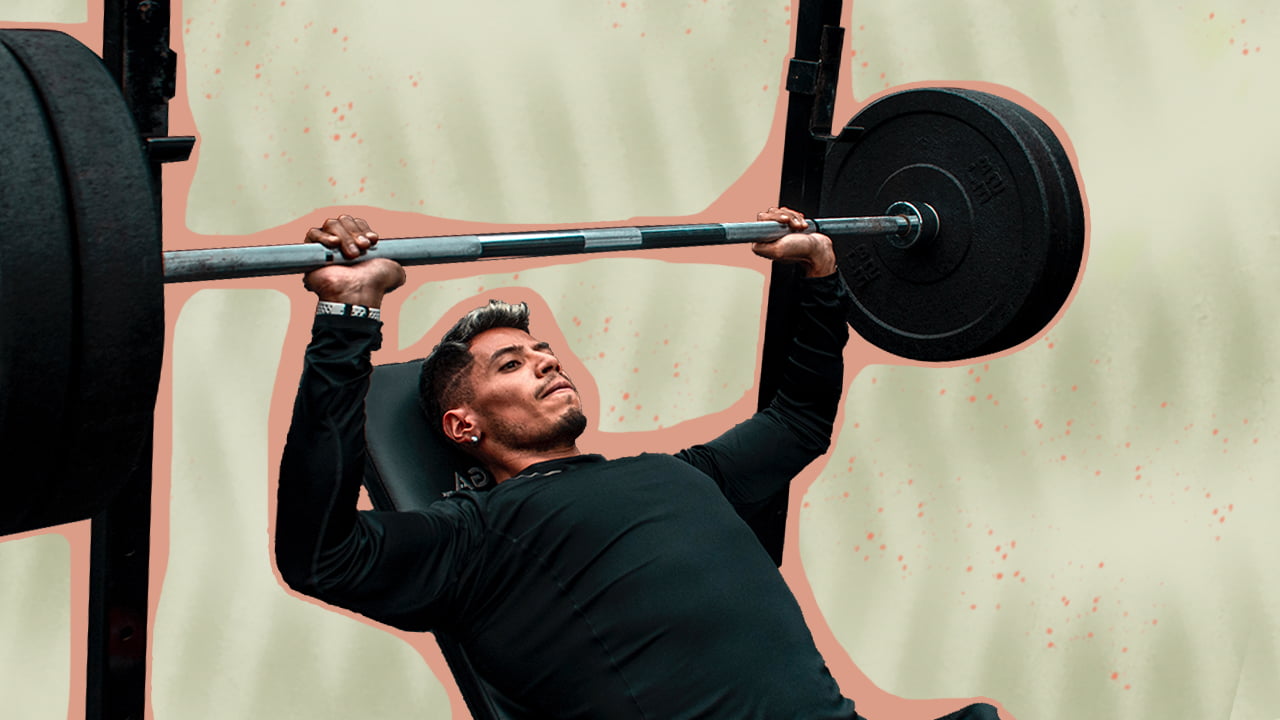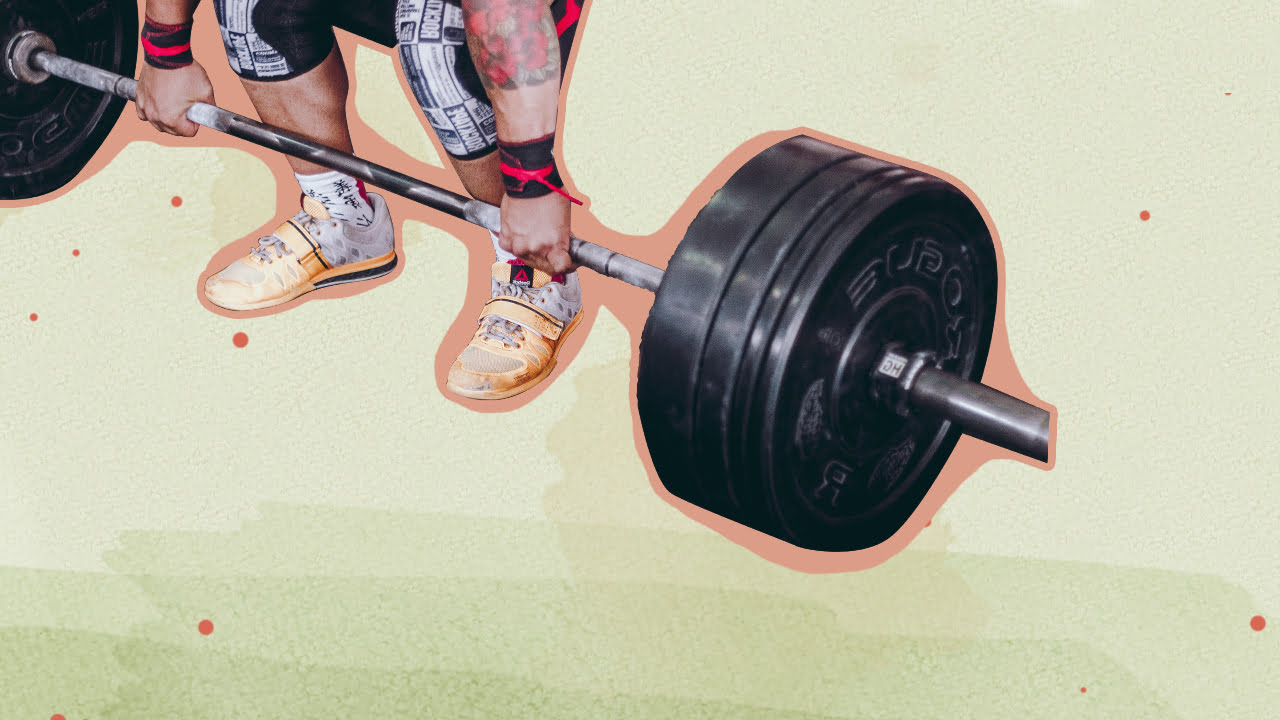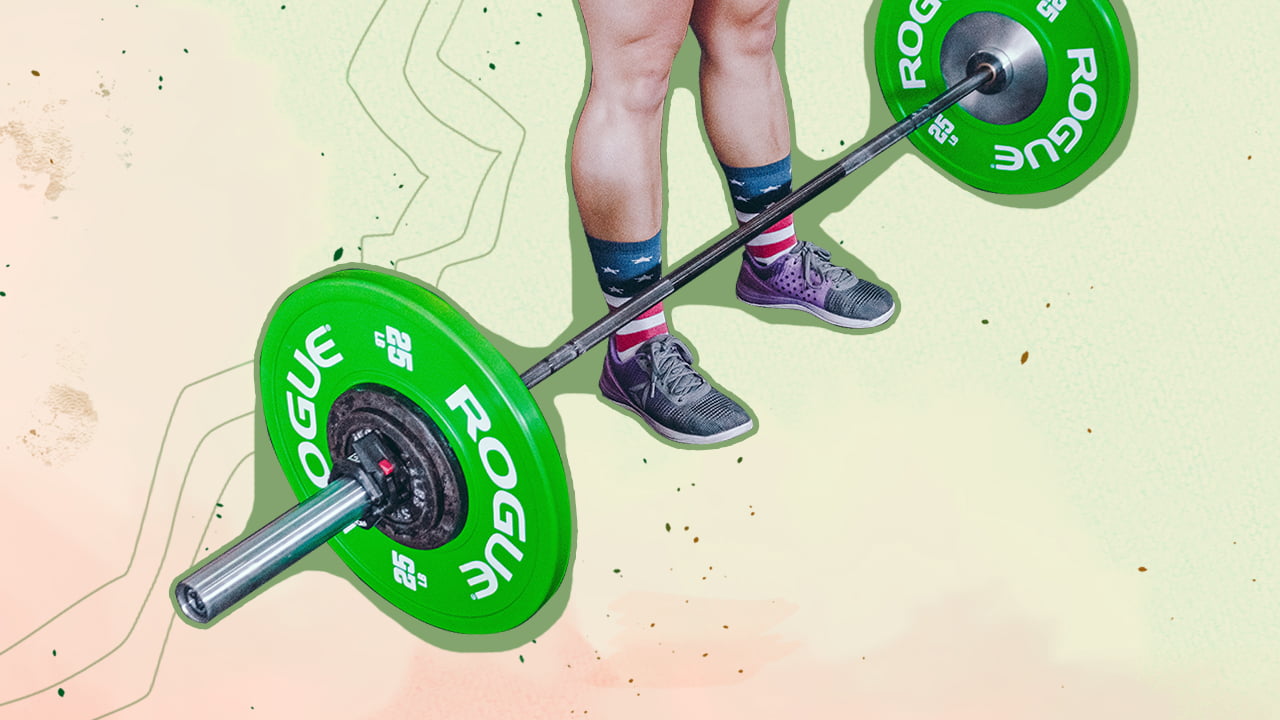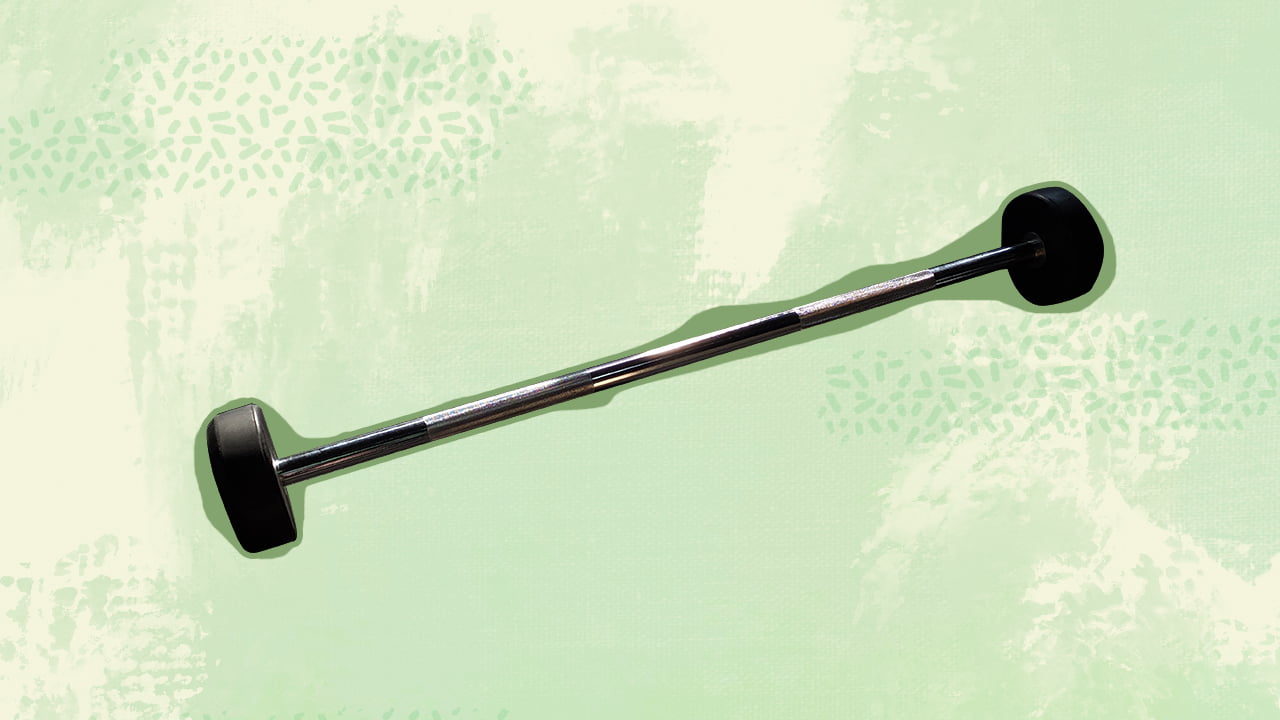What Is Barbell Knurling And Why It Matters?
Barbell knurling is the crosshatch pattern present on the bar for a stronger grip while weightlifting. It functions by increasing friction between the weightlifter’s hands and the bar, varying in its aggressiveness, pattern, and depth. Everyone at the local gym seems to be talking about barbell knurling these days. Whether they’re discussing the types of […]

Barbell knurling is the crosshatch pattern present on the bar for a stronger grip while weightlifting. It functions by increasing friction between the weightlifter’s hands and the bar, varying in its aggressiveness, pattern, and depth.
Everyone at the local gym seems to be talking about barbell knurling these days.
Whether they’re discussing the types of barbell knurling or debating which one is best, it is a subject on which everyone has a different view. One reason for that is that for the layman, there isn’t much clarity regarding barbell knurlings, their use, and their importance.
This guide strives to remove such doubts and shed some light on why does barbell knurling matter.
Barbell Knurling – What Is It And How Does It Function?

Barbells are one of the most common pieces of equipment for strength training and are used for bench presses, deadlifts, and similar workouts. In such exercises that involve pulling, your grip strength is extremely crucial and determines the amount of weight you can lift.
How well you are able to grip a barbell is affected by the various crosshatch patterns that are present on its bar. This is known as barbell knurling, an important but often overlooked feature.
The main function of knurling is to stop the barbell from slipping while working out, thus preventing accidents. This is possible since the crosshatch pattern of the knurling increases the friction present between the barbell shaft and your hands. And the importance of barbell knurlings is greater when the amount of weight being lifted is higher.
But these knurlings also have another function, which is to make the bar more comfortable to use. The right barbell knurling can ensure the perfect balance of comfort and grip for the safest workout experience.
How effective a barbell knurling is in its functions can vary significantly since it is affected by various factors, like the finish on the bar, knurl pattern, size, and shape.
Types Of Barbell Knurling
To determine which barbell knurling is most suitable, you need to learn about the various types of knurling that are generally present. Here are the different types of barbell knurl generally used:
1. Passive Knurl
Passive knurling is the most common type of knurling present on barbells and different bars. It is created by cutting grooves into the bar and results in tiny diamonds on the surface that may be pointed or flat. This type of knurling usually leads to a flat and smooth surface that provides a comfortable grip but creates little friction.
It is most suitable for beginners since it does not cause discomfort, which is why most barbells you find in gyms have this type of knurling. However, a more passive knurl won’t be able to provide any grip, while an extremely aggressive knurl can cut into your skin when holding the barbell.
2. Aggressive Knurl
Barbells used in sports like Olympic lifting usually come with aggressive knurling. This type of knurl is pointed and much sharper, ensuring a better grip than passive knurling. It is most suitable when you need to lift greater weights, but it can cause your palms to tear due to its sharpness.
Some people have barbells with aggressive curling that are too uncomfortable to use. In such situations, it is better to use them as specialty bars or get a more comfortable alternative. Competition bars usually have a more aggressive knurl than training bars that have a shallower depth knurl.
3. Fine Knurl
When a knurling is classified as fine, it does not refer to how sharp the knurling pattern is. Instead, it refers to the number of diamonds created by the grooves and how closely fitted they are together. A fine knurl is one where a larger number of these diamonds appear together.
Generally, barbells found in home gyms come with fine knurling and provides a greater number of contact points for a better grip. A major advantage of this type of knurling is that manufacturers do not need to create an extremely aggressive knurl to deliver a better grip.
4. Coarse Knurl
A coarse knurl is the exact opposite of a fine knurl, as it has a lesser number of small diamonds with more spaces between them. This type of knurling does not provide a good grip, even if the diamond pattern is extremely sharp.
What’s more, a coarse knurl combined with an aggressive knurl can cause injuries, so it is best not to use weightlifting bars with this knurl pattern.
Barbell Knurling – Shapes
Barbell knurling can also be classified on the basis of their shape, and here are the most common ones:
1. Hill Knurling
Hill knurling is the most passive knurling since the diamonds usually have flat or round tops instead of sharp ones where the grooves are not very deep. This results in a flat surface, which is comfortable to hold but does not provide a very strong grip.
Often, a knurling becomes a hill knurl over time with use, especially in the case of barbells that are made using soft steel. This type of knurling is only recommended if you are a beginner or for those who just want to focus on improving their grip. Competitive athletes or advanced lifters should avoid it.
2. Volcano Knurling
The volcano knurl is multipurpose since it is neither too passive nor extremely aggressive. It is created by grooving a mountain pattern into the bar, after which the sharp tops of the diamonds are removed to make them flatter. This provides a strong grip without causing any discomfort and makes this type of knurling very popular.
Additionally, this type of knurl pattern can be aggressive or passive depending on how closely the diamonds appear and how their tops are removed. This means it is even possible to find a barbell with an aggressive volcano knurl.
Volcano knurls also have a rim which is the point where the bar comes into contact with your hand. This provides a larger surface area for a better grip.
Barbells with a deep volcano knurl pattern are the best option for most people, even advanced users, who lift greater amounts of weight. Some popular barbells with volcano knurling include the Rogue Ohio Power Bar and the Kabuki Strength Power Bar.
3. Mountain Knurling
Mountain knurling is the most aggressive type of knurling you can find since the knurl patterns resemble sharp mountain peaks. There are many contact points that embed into the skin when you lift the barbell, thereby offering a stronger grip.
Usually, mountain knurls are present on power bars used for competitive powerlifting and on deadlift bars. Many people believe that since using barbells with mountain knurling can be quite difficult, it is bound to provide good results. And while it is true that such knurls can be beneficial to some extent, they are not ideal for most people.

How Does Knurling Create A Grip?
The main function of barbell knurling is to provide a surface that is easy to grip when lifting weights. For this purpose, the volcano knurl is perhaps the best, especially if the barbell is a multipurpose one.
As explained above, this type of knurling provides a lot of contact points due to their fine spacing, but these are not so sharp as to cause pain. The fine spacing allows manufacturers to apply a smooth finish without worrying about reducing the grip.
Thanks to this finish, weightlifters and athletes can hold the barbell more comfortably without experiencing any skin tearing.
Knurl Markings, Placement, And Termination
Different knurl patterns can be placed on different areas of the barbell and affect the type of lifting exercises that should be performed. You will need to understand how the knurling is marked and where it is placed to get the most out of it.
A. Center Knurling
As the name indicates, center knurling appears in the center of the barbell and directly affects the lifting process. For powerlifters, the center knurl can be advantageous since it helps when performing a squat by preventing the barbell from slipping.
Certain events, like men’s weightlifting competitions, require the knurl to be in the center but this type of knurling is not suitable in all situations. For instance, Olympic and CrossFit lifters require barbells that do not have a center knurl for performing cleans or thrusters. Because in situations when the bar is resting on your chest, there is the danger of the knurling scraping your skin.
You can find barbells with an aggressive and a passive center knurl.
B. Markings
Knurl marks are rings that appear on the barbell knurling and do not have any knurling patterns. They are mainly present to help lifters achieve proper hand placement, especially in competitive lifting. These rings ensure that the lifter has an even grip on both sides and may be present as single or dual rings.
The markings depend on the type of workouts for which the barbell has been designed, just like the placement of the knurling. The International Powerlifting Federation (IPF) and the International Weightlifting Federation (IWF) determine the standards for hand placement.
Powerlifting bars have two sets of knurl rings spaced 32 inches apart, providing a tighter grip and making it easier to perform moves like a bench press, deadlift, or squat. In contrast, Olympic weightlifting requires a single set of knurl rings with a gap of 36 inches in between for a more relaxed grip like the snatch or the clean.
These markings are usually present on Olympic barbells, and those meant for other competitive sports. However, for barbells meant to be used in home gyms, it does not matter which type of knurl rings you go with.
C. Knurl Termination
Knurl termination is the area where the knurling of the barbell ends and the smooth section begins, helping determine the quality of the barbell. A clean termination indicates a high-quality barbell, but keep in mind that this only affects the appearance of the barbell and not its function.
That said, a barbell with a clean knurl termination will generally be more expensive compared to options.
Choosing A Barbell
The first thing to consider when choosing a barbell is what it will be used for. This is because several types of barbells are available, and each is designed for a particular purpose.
Training bars might be the best option for a beginner looking to set up their home or garage gym, but box gyms usually have Olympic bars. When searching for a barbell, consider brands like Rogue, which is known for its range of high-quality gym equipment.
The Rogue Ohio Power Bar is made from stainless steel and comes with a center volcanic knurling. Another option from the brand is the Ohio Bar Cerakote, which is similar to the Power Bar, but you can customize its color, and it has a more durable finish.
Stainless steel bars offer a better grip since they do not have any coating that can fill up the knurling grooves and reduce effectiveness.

Selecting The Right Type Of Barbell Knurling
Many people depend on a single barbell for all their workouts, which is why it should be able to meet all their requirements adequately. For that reason, home gym barbells must have a knurl that is neither aggressive nor passive. And a volcano knurl is perfect for such needs that is ideally be present in the center.
However, people who have problems maintaining a strong grip or have calloused hands may find a barbell with aggressive knurling more suitable. If possible, go with a high-quality barbell, which despite being costlier, will provide a better experience. Apart from that, at least one set of knurl markings or rings should be present.
Taking Care Of Your Barbell
Finding and using a suitable barbell is a good start, but you need to take adequate care of it to ensure it lasts a long time. Proper maintenance will prevent the barbell from wearing out too soon and can increase its lifespan.
Regular cleaning is the first and most important thing to do, so make sure to wipe the barbell after workouts. This is especially true in scenarios where gym chalk is used for absorbing sweat and maintaining a proper grip because it can enter the grooves and corrode the surface.
Additionally, chalk can mix with grime, oil, and sweat to clog up the knurling, making it harder to hold the barbell. That is why, after completing the workout session, you should clean the barbell and remove all traces of chalk from it.
The most effective way of removing substances like chalk from the grooves of the bar knurling is by applying chemicals, such as 3-in-1 oil or WD-40. Just apply a very light coat of the chemical to the surface of the barbell and use a bristle brush to remove the chalk or other materials.
Methods For Improving Your Grip
Besides selecting a barbell with suitable knurling, there are a few other ways by which you can improve your grip.
1. The Right Finish
The finish on the knurled surface of the barbell plays a key role in determining how good a grip you can get. A barbell made of stainless steel or raw steel will provide a better grip than other types of finishes, such as zinc, chromium, or Cerakote. So, look for barbells made from smooth steel without any other finish.
2. Using Gloves
Many people wear gloves when working out, which offers several benefits, such as absorbing sweat and keeping your hands protected. But you can use lifting gloves to enhance your grip as well.
3. Application Of Chalk
You are likely to build up a sweat when working out, and sweaty hands can make it incredibly difficult to get a strong grip on weightlifting bars. That is why weightlifters often use chalk, which is very good at absorbing perspiration while improving your grip.
However, chalk dust can clog up the knurling grooves and make your home gym messy.
4. Using Liquid Chalk
Liquid chalk is a substance that offers all the benefits of regular chalk but is much easier to use for enhancing your grip. Also, it dries quickly but lasts for a long time, unlike other types of chalk. Many gyms do not allow using regular chalk due to its messy nature, but liquid chalk is an exception.
5. Drying With A Towel
While it is an obvious way of dealing with sweat and enhancing grip, drying with a towel is still an important point worth mentioning here.
6. Getting Lifting Straps
You can use lifting straps to make the process of weightlifting easier. These straps are usually made of leather, canvas, or nylon and go around the barbell and your wrist to keep the wrists protected when performing lifting exercises.
7. Improving Strength
The best way to improve your grip is to gain more strength, which requires regular training.
Tip
A deadlift is the most suitable exercise that can help improve your grip strength drastically. However, for this, it is vital to use barbells with more aggressive knurling. If you only have a barbell with softer or old knurling, I recommend using a lot of straps to ensure safety and prevent accidents.

Barbell Knurling Conclusion
It should be clear by now that having the right type of knurling is crucial for making workouts more effective and preventing accidents or injuries.
If you’re planning to get a new barbell, it is a good idea to research the various options and look at the knurling type, placement, and termination. For beginners, going with a barbell that has a volcano knurling is an excellent choice.
But barbells with aggressive knurling might be a more sensible choice if you’re an advanced user.
